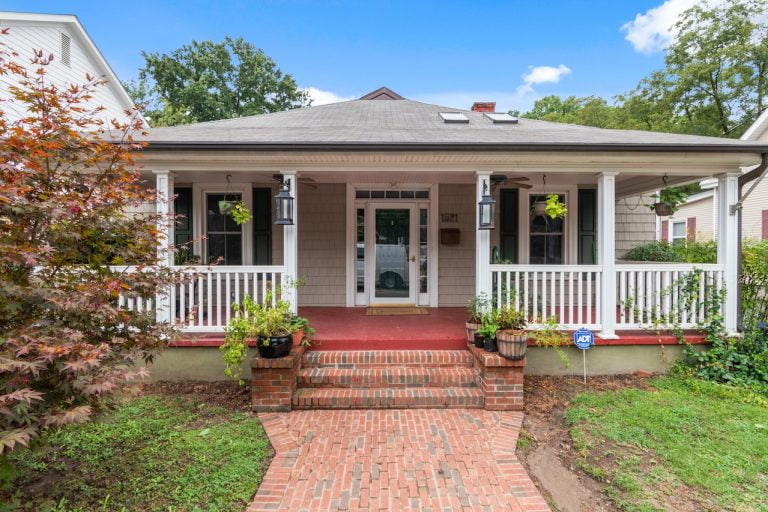Parapet roof design, an architectural feature rich in history and functionality, has evolved significantly to become a staple in modern building aesthetics. In the UK, this design element is not only a testament to architectural evolution but also a reflection of the region’s unique historical and cultural influences. Parapets, originally designed for defense in ancient structures, now offer a blend of safety, privacy, and style in contemporary architecture.
This article explores the diverse aspects of parapet roof design, delving into its historical roots, various types, and distinct shapes, while highlighting its prominence in UK architecture.
Historical Evolution of Parapet Roofs

The history of parapet roofs dates back to ancient civilizations, where they were primarily used for defense purposes in castles and fortifications. These early parapets were designed to protect inhabitants from external threats, providing a shielded platform for defense. Over time, their role transitioned from purely functional to decorative.
In medieval architecture, particularly in Europe, parapets became ornamental features, often adorned with intricate designs. This shift marked the beginning of the integration of parapet roofs into residential and commercial architecture, evolving from a symbol of protection to an element of aesthetic and architectural significance.
Types of Parapet Walls in Roof Design

- Embattled Parapets: Resembling the battlements of castles, embattled parapets are characterized by alternating raised and lowered sections. While they are not commonly constructed in modern times, they remain a symbol of historical architecture, especially in older UK buildings.
- Plain Parapets: Dominant in contemporary architecture, plain parapets offer a sleek and minimalist look. Typically constructed with concrete, they provide privacy and safety without compromising on style. Their simplicity makes them a popular choice in modern urban designs.
- Perforated Parapets: Merging functionality with aesthetics, perforated parapets feature designs incorporated into the wall itself. This style allows for creative expression, with patterns ranging from geometric shapes to elaborate motifs, adding a distinctive character to the building’s exterior.
- Paneled Parapets: Known for their ‘double wall’ appearance, paneled parapets add depth and texture to the roofline. These are simpler than perforated types but offer a more intricate design than plain parapets. They exemplify how subtle additions can significantly enhance architectural appeal.
Shapes of Parapet Walls and Their Functionalities

- Flat Parapets: Commonly found on flat-roofed buildings, flat parapets are the most straightforward design. They provide a clean and unobtrusive border around the roof, contributing to a modern and uncluttered architectural look.
- Sloped Parapets: These are designed to complement sloped roofs, such as gable roofs. The sloping design of the parapet follows the roof’s angle, adding depth and dimension to the structure’s profile.
- Stepped Parapets: Stepped parapets are characterized by a stair-step design. On pitched roofs, they mirror the roof’s slope, while on flat roofs, they ascend in steps to a peak. This design is often seen in historical buildings, like churches and government structures, adding grandeur and prominence.
- Curved Parapets: Offering a fluid and dynamic design, curved parapets follow the roof’s line but with a rounded, curved form. This shape is less common but provides a unique architectural feature, often used to soften the lines of a building or to add a decorative flourish.
Parapet Roof Design in UK Architecture
In the UK, parapet roofs are a distinct feature in both historical and modern architecture. They are often seen in Victorian and Georgian buildings, where they add a classic, timeless charm. In contemporary British architecture, parapet roofs are used to create sleek, clean lines, particularly in urban landscapes.
They serve both aesthetic and practical purposes, such as hiding rooftop equipment and providing additional fire protection. Notable examples include the iconic Georgian terraces of Bath and the modern commercial buildings in London’s business districts, each showcasing the versatility and adaptability of parapet roof designs in various architectural contexts.
Material Choices and Construction Considerations

The choice of materials for parapet roofs is crucial for both durability and aesthetic appeal. Traditionally, stone and brick have been popular in the UK, especially in older buildings, due to their robustness and classic appearance. In modern construction, however, materials like concrete, steel, and glass are more prevalent, offering a more contemporary look and easier maintenance.
Construction considerations include ensuring proper waterproofing and drainage to prevent water damage, as well as adhering to building codes and safety regulations, especially in terms of height and structural support.
Modern Innovations and Trends
The evolution of parapet roof design continues with modern innovations and trends. Green roofing is one such trend, where parapets are used to contain rooftop gardens or green spaces, contributing to environmental sustainability. Another trend is the integration of solar panels within parapet designs, aligning with energy efficiency goals.
Architectural experimentation has also led to the use of dynamic shapes and unconventional materials, pushing the boundaries of traditional parapet design. These trends reflect a growing emphasis on eco-friendly practices and technological integration in architecture, with parapet roofs playing a key role in these developments.
Conclusion
Parapet roofs, with their rich history and diverse designs, remain a vital component of architectural expression. From their origins as protective structures to their modern incarnations as stylish and functional elements, they have continuously adapted to meet changing aesthetic and practical needs. In the UK, parapet roofs are a testament to the country’s architectural heritage and its ongoing innovation in building design. As architectural trends evolve, parapet roofs are likely to continue playing a significant role, blending tradition with modernity and functionality with form.

